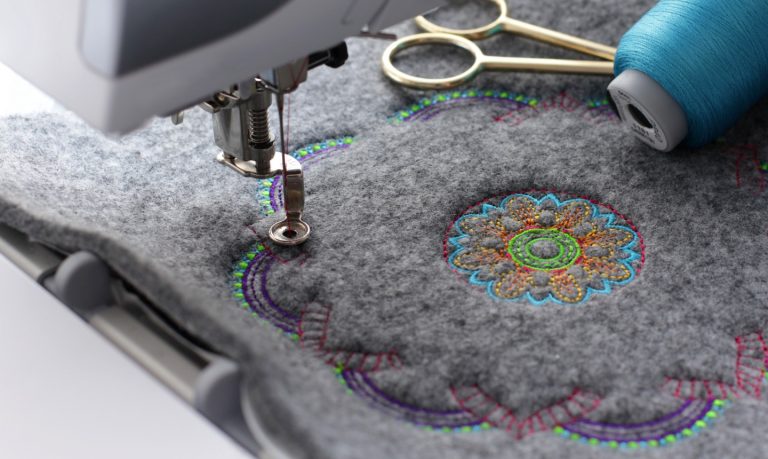Mastering the Embroidery Digitizing Refine: Your Ultimate Guide
Embroidery digitizing is a thorough craft that needs accuracy and know-how to translate complex designs into digital layouts for device embroidery. As artisans get started on this journey to grasp the needlework digitizing procedure, an extensive understanding of the fundamentals establishes the foundation for excellence. Nonetheless, past the simple expertise exists a realm of sophisticated software application, specialized devices, and nuanced strategies waiting to be explored. By delving into the subtleties of digitizing, one can unlock a world of creative possibilities and elevate their embroidery projects to new heights.

Understanding Needlework Digitizing Essentials
Needlework digitizing essentials create the structure whereupon detailed designs are translated into machine-readable styles for accurate stitching. This preliminary action in the embroidery digitizing process is important for making sure that the last embroidered product is a faithful representation of the initial layout. Understanding embroidery digitizing basics entails realizing vital principles such as stitch kinds, stitch direction, density, underlay, and draw compensation.
Sew kinds play a crucial function in identifying the visual and textural end result of the stitched design. By selecting the ideal stitch kind, whether it be satin, fill, or running stitch, digitizers can achieve the desired result and improve the overall quality of the embroidery. Furthermore, stitch instructions influences the flow and dimension of the layout, while density identifies the spacing and protection of the stitches.
Furthermore, padding stitching gives security to the design by safeguarding the material and preventing distortion throughout the embroidery procedure. Pull settlement is one more important consideration to neutralize the natural propensity of material to agreement when stitched. Understanding these needlework digitizing fundamentals is basic for developing professional-quality embroidered items.
Selecting the Right Digitizing Software Program
Choosing the ideal digitizing software application is a vital choice that substantially influences the effectiveness and quality of the needlework digitizing process. Digitizing for Embroidery. When selecting the best digitizing software, it is important to consider variables such as the complexity of layouts you prepare to develop, the user-friendliness of the software, the degree of customer assistance supplied, and the compatibility with your needlework machine
There are different digitizing software program options readily available on the market, varying from basic programs for novices to advanced software application for professional digitizers. Some prominent options consist of Wilcom EmbroideryStudio, Hatch Embroidery Software Program, and PulseID. These software provide a variety of devices and attributes to assist you produce detailed designs easily.
Before making a choice, it is recommended to discover the different this link software application click to find out more choices with cost-free trials or trials to determine which one ideal matches your needs. Additionally, reading evaluations and looking for recommendations from knowledgeable digitizers can provide valuable understandings into the strengths and weak points of each software (Digitizing for Embroidery). By carefully assessing your demands and contrasting the attributes of different digitizing software program, you can make an enlightened selection that enhances your needlework digitizing operations
Digitizing Devices and Strategies

Optimizing Design Setup for Needlework
Understanding the complexities of layout setups is fundamental in attaining ideal results in the needlework digitizing process, structure upon the foundation find laid by recognizing digitizing tools and techniques. When enhancing style settings for embroidery, it is necessary to think about elements such as stitch type, density, padding, pull compensation, and enrollment. Enrollment settings align various elements of the design properly, keeping general design honesty.

Troubleshooting Common Digitizing Issues
When experiencing typical digitizing issues during the needlework process, it is important to understand the origin and implement efficient solutions promptly. One typical issue is stitch density concerns, where stitches may be too thick, triggering the fabric to pucker, or as well sparse, leading to spaces in the design. Readjusting the stitch density settings in the digitizing software can aid settle this problem.
Another regular challenge is thread breaks throughout the needlework process. This can occur as a result of different factors such as incorrect tension setups, dull needles, or utilizing low-grade thread. Guaranteeing proper maintenance of the embroidery equipment, including normal needle changes and stress adjustments, can lessen the event of string breaks.
Furthermore, style registration errors can lead to misaligned elements within the embroidery style. Inspecting the layout alignment in the digitizing software application and making necessary adjustments before sewing can help in preventing this problem. By addressing these usual digitizing problems without delay and efficiently, you can make certain a smoother embroidery procedure and high-quality finished products.
Verdict
In verdict, understanding the embroidery digitizing procedure needs a strong understanding of the essentials, the right selection of software program, and expertise of devices and methods. Maximizing design settings and troubleshooting common digitizing problems are critical actions in ensuring top quality needlework outcomes. By complying with these steps carefully, one can attain accuracy and performance in the digitizing process.
Comments on “Custom Digitizing for Embroidery: Tailored to Your Needs”